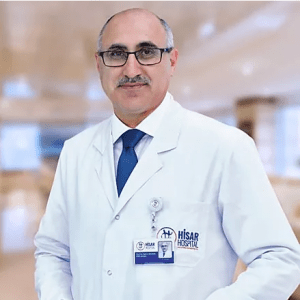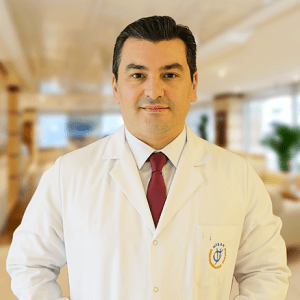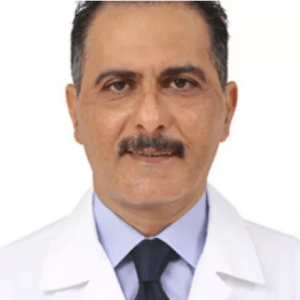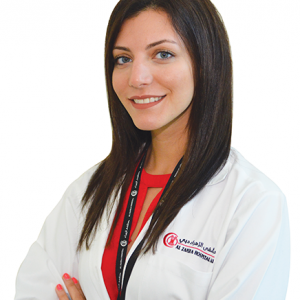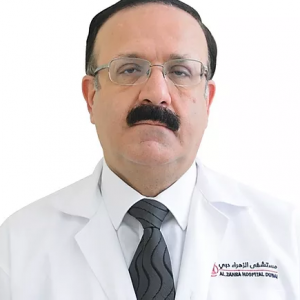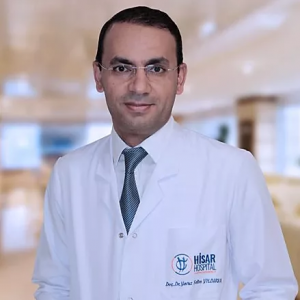FESS – Functional Endoscopic Sinus Surgery – Septoplasty
FESS is Functional Endoscopic Sinus Surgery or septoplasy. FESS is a minimally invasive technique used to restore sinus ventilation and normal function. This is done for persons who have recurrent acute … Read More
Top Doctors For FESS – Functional Endoscopic Sinus Surgery – Septoplasty Treatments
Top Hospitals For FESS – Functional Endoscopic Sinus Surgery – Septoplasty Treatments
FESS – Functional Endoscopic Sinus Surgery – Septoplasty
Septoplasty procedure
Firstly, general anaesthesia or intravenous sedation is administered according to the health condition to numb the sensation of any pain or discomfort. If the only septoplasty is required then a cut is made inside the nasal cavity. Sometimes, rhinoplasty is employed along with septoplasty, in case of severe condition a cut is made on the cartilage which divides nostrils. Then a membrane that acts as the septum covering is moved to another side. A similar process is done with another side. It is done with extreme care as it can result in a hole or tear in the lining. After this, deviated septum or cartilage is removed and only mucosal lining is left. The septum is straightly positioned with mucosal lining fixed together. Packing is often applied around the surgical area for some time. This packing is removed by a doctor shortly while inner joints dissolve over time.Recovery from septoplasty
A patient stays only for a short while in the hospital after surgery to overcome the effect of anaesthesia. During recovery, mild pain is expected for which certain medications are recommended. Packing is placed to avoid bleeding. Swelling and discomfort are present for some time after the procedure. Usually, medicines like ibuprofen and aspirin are avoided to reduce the chances of bleeding. Weightlifting, heavy physical activities, sports, exercise and running must be avoided for fast recovery. Wearing a button up shirts and elevation of the head during sleep for healing quickly is necessary. Blow to the nose, pressure on the nose and direct forceful contact with water must be avoided. Other things for facilitating recovery are refraining from alcohol and smoking, avoiding crowded places and reducing contact with people having a cold or allergy.Septoplasty complications
Though complications are not normal some may occur due to reactions and hygienic lifestyles like a light scar over the area, formation of a hole in the septum, deformed nose shape, reduction in sense of smell, bleeding, infections and nose discolouration.Benefits of septoplasty surgery
Successful surgery almost 85% in patients with sinusitis and nasal polyps, reduced risk of complications and side effects, easily available, affordable, short procedure, availability of medicines for pain reduction, fast recovery, early hospital discharge and painless surgery.Septoplasty and Rhinoplasty
Like septoplasty, rhinoplasty is a surgical process of the nose often known as a nose job. It is characterized as plastic surgery of the nose for reconstructing or changing. It is of two types namely cosmetic surgery and reconstructive surgery where former denotes altering the appearance of the nose while the latter means restoring proper function of the nose. A reconstructive method is used for curing injuries of nasal cavities like trauma, a congenital defect, correcting previous rhinoplasty and problems of breathing. It is further categorized into two parts that are closed rhinoplasty and open rhinoplasty. In open rhinoplasty, a nasal septum end also known as columella is cut along with other regular cuts made in septoplasty whereas, in closed septoplasty, the columella is not cut. This procedure involves light scar, reduced risk of oedema, shorter time for the procedure, quick recovery, less damage to the nose and no cut on the columella.Symptoms
These are the following symptoms of FESS or Sinusitis:
• Purulent discharge where the mucous is greenish gray or yellowish.
• Postnasal drip.
• Facial pressure and headache.
• Hyposmia or reduced ability to smell and detect odors.
• Anosmia or complete loss off smell.
• Nasal obstruction.
Septoplasty is helpful in treating septum deviation, nasal polyps, enlargement of nose cartilage and sinusitis and restores breathing through a proper flow of air by employing surgery.
Nasal polyps- it is defined as the growth of non-cancerous tissues of the wall of the nose. Causes of nasal polyps are severe infection of sinus, asthma, Churg-Strauss syndrome, hay fever, cystic fibrosis, ibuprofen and aspirin sensitivity which are nonsteroidal anti-inflammatory drugs and swelling and redness in the nasal mucosa.
Symptoms of nasal polyps are runny nose, snoring, congestion, stuffiness in the nasal passage, flow of mucus down the throat, sleep apnea, blocked nose, reduction in sense of smell, pressure on the forehead, facial pressure, breathing through mouth, pain, bleeding from nose and headache.
It can be diagnosed through physical tests, MRI and CT scan. Earlier treatment involves medications like fluticasone, mometasone, budesonide and prednisone. However, these medications have side effects such as increased pressure in eyes, retention of fluid and rise in blood pressure. For chronic nasal polyp, surgery is done.
Deviated septum- deviation of the septum is a nasal disorder where cartilage is shifted towards one side of the nose which reduces passage for airflow. Causes of the deviated septum are accidents, the sharp impact from a blunt object, sports injury and congenital septum problem.
Symptoms of the deviated septum are blockage of one side of the nose, infection of sinus, dryness in a nostril, bleeding and difficulty in breathing, snoring, congestion and pressure on the nasal cavity. In case of severe septum deviation, chronic facial pain and excess bleeding occur.
During primary treatment, antihistamines, nasal strips, spray for nasal steroid and decongestants are administered to help in overcoming symptoms and find out the main cause of the problem to provide correct treatment. Mostly, reconstruction surgery is employed for straightening septum.
Sinusitis- there are several sinuses in the body which creates mucus to help in preventing germs attack in various parts of the body. Sometimes, inflammation occurs in the sinus due to certain infections it is also called sinusitis. There are three types of sinusitis namely acute sinusitis, subacute sinusitis and severe sinusitis. In acute sinusitis, an infection lasts for almost 3-4 weeks and occurs due to seasonal allergies and the common cold. In subacute sinusitis, symptoms are visible for at most 3 months and it occurs due to bacterial infections. Chronic or severe sinusitis occurs as a result of congenital allergy or nasal structure problem and it lasts for at least 4 months.
There is a greater chance of sinusitis in case of nasal polyps, growth of bone in the nose, deviated septum of the nose, weaker immune system, allergies, smoking, infection of respiratory organs, cystic fibrosis and fungal or bacterial infection.
Symptoms of sinusitis are high fever, fatigue, cough, runny nose, extreme headache, reduction in sense of smell, stuffiness and allergic reactions with no improvement in symptoms even after several days and dark and thick mucus through the nose. These symptoms are expected in any type of sinusitis differing only in severity.
It can be treated through medicines and surgery as well. To prevent sinusitis one must consume fruits and vegetables, wash hands, avoid chemicals, smoking and irritants, intake of antihistamine for curing allergies and preventing flu or severe cold. If sinusitis is not cured properly, it can develop in other problems such as infection of the bone that is osteomyelitis, pus with infection in the sinus cavity, meningitis which causes damage to spinal cord and brain and orbital cellulitis, tissue infection around eyes.
Causes
• Sinus complications can be caused by anatomical factors such as deviated septum or nasal polyps.
• It can also be caused by infection of the nose or throat.
FAQ
What is FESS?
FESS is Functional Endoscopic Sinus Surgery or septoplasy.
Why is it done?
FESS is a minimally invasive technique used to restore sinus ventilation and normal function. This is done for persons who have recurrent acute or chronic infection sinusitis.
How long is the Septoplasty Surgery?
Usually it takes between 60 – 90 minutes, under local or general anesthesia.
What is the chances of success?
The surgery is usually 90 % successful.
What are the possible complications of this surgery?
The most catastrophic complication of FESS is blindness resulting from damage to the optic nerve. However, the evidence indicates that the frequency of this complication is extremely low.12,13 Leak of Cerebrospinal fluid most common major complication of FESS. The leak is usually recognized at the time of surgery and can easily be repaired. Other, less serious, but still rare complications include orbital hematoma and naso-lacrimal duct stenosis. Most serious complication is blindness resulting from damage to optic nerver though the frequency is extremely low.
What is the cost of septoplasty?
Septoplasty cost ranges from $3,000 to $7,000. This cost differs depending on the hospital facility and severity of the problem. It can cost less if a patient has an insurance cover.
How to prepare for septoplasty?
Avoid eating for at least 8 to 10 hours before surgery, all necessary medical tests must be present before surgery, previous medications must be stopped for 2 weeks prior to surgery, a patient must be accompanied by someone and other health problems must be informed beforehand.
What are the side effects of septoplasty?
Side effects are uncommon yet some of them are bleeding due to pressure on the nose, hole in the septum which is highly rare, pain, swelling, redness, scar, deformed nose, a problem in sleeping for some days and discoloration around the area.
Is it painful?
No, it is not painful since anaesthesia is administered to numb pain. But mild pain is experienced for some days during surgery. Certain medications are prescribed to reduce pain in case of severity.
How long does septoplasty take?
Septoplasty takes around 30 to 90 minutes. However, preparation can take a few more minutes. Overnight before and after surgery is not required. The patient is discharged the same day if no complications are observed.
















